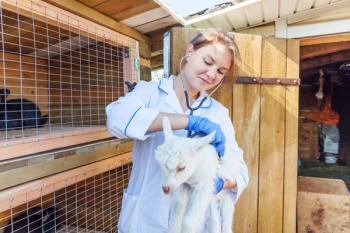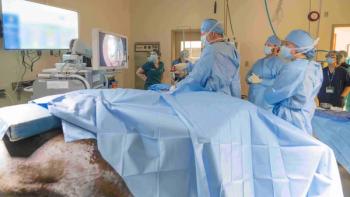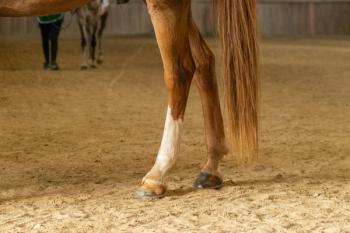
Breathe in: Long-term respiration study could have far-reaching applications
Hilton Head, S.C. -- A long-term study of how horses move and breathe may have far-reaching veterinary and human-health applications, according to a presentation of the group's work at a recent American Physiological Society conference.
Hilton Head, S.C.
-- A long-term study of how horses move and breathe may have far-reaching veterinary and human-health applications, according to a presentation of the group's work at a recent American Physiological Society conference.
The veterinary application might help explain some of the reasons for a spate of leg fractures in racehorses or at least help improve equine muscular health in general, while the equine respiration portion of the study might lead to better breathing devices for humans who need them.
The team examining both areas for more than 10 years includes John Hermanson, Norm Ducharme and Johathan Cheetham, all of Cornell University's College of Veterinary Medicine; John Bertram, of the University of Calgary College of Medicine; and Michael Butcher of Youngstown (Ohio) State University's Department of Biological Sciences. Hermanson presented the group's findings at the physiological society conference.
The research into precisely how the muscles and tendons in horses' legs work together to allow it to walk, trot, jump and gallop points to the possibility that forelimb fractures leading to breakdowns could stem from fatigue within a deep digital flexor tendon resulting from excessive stress and strain. That could disrupt the deep tendon's ability to work in harmony with a superficial digital flexor tendon, the research suggests
.The respiratory research focuses on two cartilages that protect the horse's larynx, opening when the horse breathes during exercise to maximize airflow to the lungs and closing when the horse swallows. A muscle that opens the cartilages is actuated by a nerve that is susceptible to disease and damage. That can cause the cartilages to collapse, obstruct airflow and lead to poor performance.
The researchers have been developing a pacemaker for the horse's larynx to stimulate the muscle and keep it open during exercise. That work could help in the development of a pacemaker for people who suffer paralysis of the larynx, often a complication of thyroid surgery, or undergo laryngeal transplant.
Newsletter
From exam room tips to practice management insights, get trusted veterinary news delivered straight to your inbox—subscribe to dvm360.




